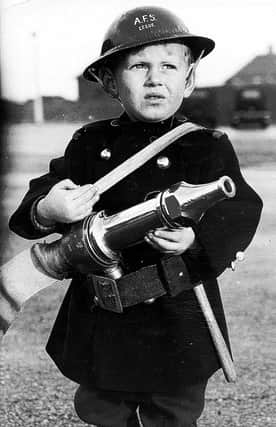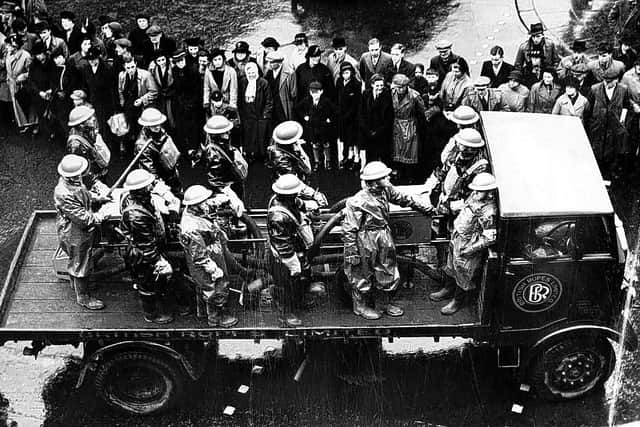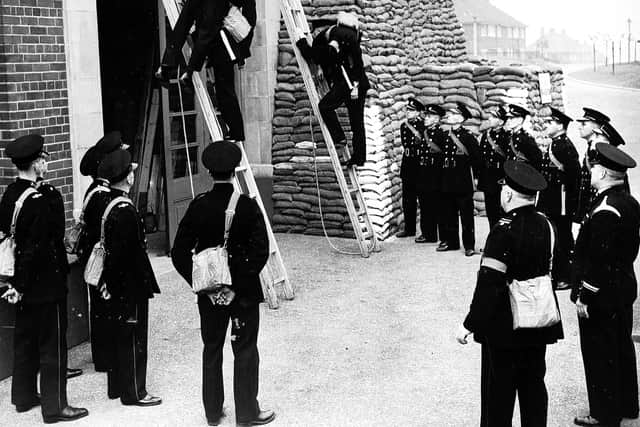Rare pictures recall time when ‘firemen’ were only two years old


Before the creation in 1941 of a single National Fire Service, there were as many as 1,600 brigades, operated by urban and rural councils. Alongside these sat the Auxiliary Fire Service, formed shortly before the Second World War as part of the civil defence effort.
But there was little standardisation of equipment between them. Not even the size of the hydrant valves could be guaranteed to match.
Advertisement
Hide AdAdvertisement
Hide AdOne of our pictures shows members of the auxiliary service in Leeds being instructed in the firemen’s lift. At the outset of war, some of these part-time firefighters worked six hour shifts after doing eight or nine hours at their regular jobs. Lacking full training, they were also required to share the general station duties between them.


But the initiative served to illustrate the community spirit of the time, and the Gipton section of the auxiliary service went so far as to adopt two-year-old Brian Garnett as its mascot, kitting him out with a complete uniform, helmet, toy axe and miniature gum boots.
We had not seen the last of the Auxiliary Fire Service after its amalgamation into the national organisation. It reemerged after the war as part of the country’s plans to respond to a nuclear attack and remained in existence until 1986. The Bedford “Green Goddess” fire engines with which it was equipped in the 1950s were in use as late as 1977, during the first strike by regular firefighters.
By that time, the number of brigades had been reduced to just one per county or borough, and training and equipment brought into line.
Advertisement
Hide AdAdvertisement
Hide AdEditor’s note: first and foremost - and rarely have I written down these words with more sincerity - I hope this finds you well.


Almost certainly you are here because you value the quality and the integrity of the journalism produced by The Yorkshire Post’s journalists - almost all of which live alongside you in Yorkshire, spending the wages they earn with Yorkshire businesses - who last year took this title to the industry watchdog’s Most Trusted Newspaper in Britain accolade.
And that is why I must make an urgent request of you: as advertising revenue declines, your support becomes evermore crucial to the maintenance of the journalistic standards expected of The Yorkshire Post. If you can, safely, please buy a paper or take up a subscription. We want to continue to make you proud of Yorkshire’s National Newspaper but we are going to need your help.
Postal subscription copies can be ordered by calling 0330 4030066 or by emailing [email protected]. Vouchers, to be exchanged at retail sales outlets - our newsagents need you, too - can be subscribed to by contacting subscriptions on 0330 1235950 or by visiting www.localsubsplus.co.uk where you should select The Yorkshire Post from the list of titles available.
Advertisement
Hide AdAdvertisement
Hide AdIf you want to help right now, download our tablet app from the App / Play Stores. Every contribution you make helps to provide this county with the best regional journalism in the country.
Sincerely. Thank you.
James Mitchinson, Editor
Comment Guidelines
National World encourages reader discussion on our stories. User feedback, insights and back-and-forth exchanges add a rich layer of context to reporting. Please review our Community Guidelines before commenting.